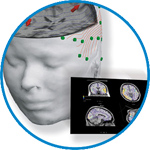- Home
- About ANT
-
Products

asa
asa is a highly flexible EEG/ERP and MEG analysis package with a variety of source reconstruction, signal analysis and MRI processing features.
.jpg)
eego mylab
The new frontier in multimodal brain research. With up to 16 kHz sampling rate, 256 EEG channels and unique software features, eego mylab gives you an unprecedented in-depth understanding of the human brain.

eego sports
eego sports offers complete freedom to collect high-density EEG data, bipolar EMG signals, and a variety of physiological sensor data, wherever and whenever required, with publish quality data in less than 15 minutes!

waveguard net
The waveguard net sets a new standard for research applications requiring high-density EEG data acquisition with quick preparation time, high flexibility, and subject comfort.

visor2
Our new and upgraded visor2 solutions integrate all the latest technologies for navigated rTMS, dual-coil navigation support, EEG-TMS recordings and pre-surgical evaluation for the highest quality in research and clinical procedures.

powerMAG ANT
The PowerMAG ANT 100 rTMS stimulator is designed for the specific needs of high-end TMS applications. Powerful high-frequency TMS as well as high precise single pulse and repetitive pulse protocols are combined in one single device.

xensor
xensor offers the solution for digitization of 3D electrode positions. xensor takes care of the whole procedure; it records, visualizes and stores positions acquired with a dedicated digitizer.

waveguard original
waveguard original is the cap solution for EEG measurements compatible with fMRI, MEG and TMS system. Use of active shielding guarantees performance in even the most demanding environments.

waveguard connect
waveguard connect EEG caps are a perfect match for hospitals and institutes aiming at reliable EEG, maximum uptime and great patient comfort! For optimal signal quality, the electrodes are made of pure, solid tin.

waveguard touch
waveguard touch is a dry electrode EEG cap. The unique Ag/AgCl coated soft polymer electrodes provide stable, research-grade EEG signals while maintaining subject comfort. The combination of these innovative dry electrodes and the industry-leading waveguard cap makes waveguard touch the best solution for dry EEG.

smartmove
smartmove allows planning of a complete TMS session ahead by defining stimulation sites based on anatomical MRI information and functional information like fMRI, PET or EEG/MEG.
Stay - References
- Support
- Events
- News
- Contact Us
You are here
Effect of repetitive transcranial magnetic stimulation on anxiety symptoms in patients with major depression: An analysis from the THREE‐D trial
Effect of repetitive transcranial magnetic stimulation on anxiety symptoms in patients with major depression: An analysis from the THREE‐D trial
Background
Despite the advances in the use of repetitive transcranial magnetic stimulation (rTMS) for the treatment of major depressive disorder (MDD), there is relatively little information about its effect on comorbid anxiety symptoms.
Methods
Data from a large randomized noninferiority trial comparing intermittent theta‐burst stimulation (iTBS) and high‐frequency (10 Hz) rTMS delivered to the left dorsolateral prefrontal cortex (HFL) were analyzed. The primary aim was assessing changes in anxiety/somatization items from the 17‐item Hamilton Depression Rating Scale (HAM‐D) and the Brief Symptom Inventory (BSI‐A), using baseline‐adjusted change with an analysis of covariance (ANCOVA), with the final scores as the outcome and baseline scores as the adjustment covariates.
Results
The analytical cohort comprised 388 participants (189 in HFL and 199 in iTBS groups). From baseline to the end of the rTMS course, the combined score from the anxiety items from the HAM‐D dropped from 7.43 (SD = 2.15) to 4.24 (SD = 2.33) in the HFL group, and 7.33 (SD = 2.13) to 3.76 (SD = 2.23) in the iTBS group. The ANCOVA resulted in an effect from time (p < .0001), but not from group allocation (p = .793) or time × group interaction (p = .976). We observed mean changes in the BSI‐A of −3.5 (SD = 5.4) and −3.2 (SD = 4.8), with significant effect of time (p < .0001) in the ANCOVA, but not group allocation (p = .793) or group × time interaction (.664).
Conclusions
Our findings suggest that both 10 Hz and iTBS may yield potential reductions in anxiety symptoms when used for the treatment of MDD. Our findings warrant future research into the effects of left‐sided rTMS on depressed patients struggling with concurrent anxiety symptoms.

 Read more
Read more.jpg)




